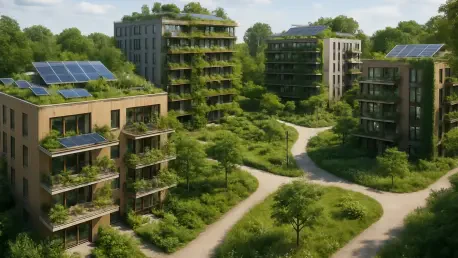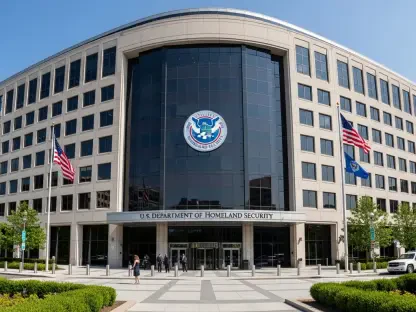In a world grappling with the dual challenges of climate change and economic inequality, the Global South stands at a critical juncture where sustainable development is not just an option but a necessity for survival and progress. Regions spanning Africa, Latin America, and parts of Asia face unique pressures, from resource scarcity to the devastating impacts of global warming, often bearing the brunt of environmental crises they did little to create. Yet, amidst these struggles, a wave of innovative strategies is emerging, tailored to the specific needs of these developing nations. These approaches aim to harmonize economic growth with ecological preservation, offering a beacon of hope for millions. By leveraging green technologies, fostering international partnerships, and prioritizing localized solutions, there is a growing movement to reshape the future of these regions. This discussion delves into the multifaceted efforts underway to drive sustainability, exploring how policy, technology, and community engagement intersect to address some of the most pressing global challenges.
Policy Frameworks for Sustainable Growth
Building Robust National Strategies
Crafting effective national policies for green development in the Global South requires a delicate balance between immediate economic needs and long-term environmental goals. Many countries in these regions face systemic issues such as poverty and underfunded infrastructure, which can make the transition to sustainable practices seem daunting. However, tailored policy frameworks are being designed to incentivize renewable energy adoption, such as solar and wind projects, through subsidies and tax breaks. These initiatives aim to reduce reliance on fossil fuels while creating jobs in emerging green sectors. Governments are also increasingly recognizing the importance of integrating climate resilience into urban planning, ensuring that cities can withstand rising temperatures and extreme weather. By prioritizing legislation that supports sustainable agriculture and water conservation, policymakers are laying the groundwork for a future where development does not compromise natural resources. International benchmarks and local stakeholder input are proving vital in shaping these actionable, context-specific strategies.
Beyond legislative measures, capacity building within government bodies is essential to ensure that green policies are not just drafted but effectively implemented. Training programs for officials, often supported by global organizations, focus on equipping them with the knowledge to monitor and enforce environmental regulations. Additionally, anti-corruption measures are being emphasized to guarantee that funds allocated for green projects reach their intended destinations. Public awareness campaigns play a complementary role, educating citizens about the benefits of sustainability and encouraging grassroots support for policy changes. This multi-layered approach helps bridge the gap between high-level decision-making and on-the-ground impact. Over the next few years, from now until 2027, many nations plan to scale up these efforts by aligning their national agendas with global sustainability goals, fostering a cohesive push toward a greener economy that prioritizes both people and the planet in equal measure.
International Support and Collaboration
International cooperation stands as a cornerstone for advancing green development in the Global South, where financial and technical constraints often hinder progress. Developed nations and global institutions are stepping up with funding mechanisms, such as grants and low-interest loans, to support renewable energy infrastructure and climate adaptation projects. These resources enable countries to bypass outdated, polluting technologies and adopt cleaner alternatives like solar microgrids or energy-efficient systems. Knowledge transfer is equally critical, with partnerships facilitating the sharing of best practices in sustainable urban planning and disaster risk reduction. Multilateral agreements are fostering a sense of shared responsibility, acknowledging that climate change is a global issue requiring collective action. Through these collaborative efforts, the foundation is being laid for scalable solutions that can transform entire regions while addressing systemic inequities.
Equally important is the role of policy alignment between donor countries and recipients to ensure that aid is not only provided but also utilized effectively. Technical assistance programs are being tailored to build local expertise, reducing dependency on foreign consultants over time. For instance, joint research initiatives are helping to develop climate-resilient crop varieties suited to specific regional conditions, directly benefiting smallholder farmers. Furthermore, forums and summits hosted by international bodies provide platforms for leaders from the Global South to voice their unique challenges and influence global environmental agendas. This dialogue ensures that support is not a one-way imposition but a partnership that respects cultural and economic contexts. As these collaborations deepen, the focus remains on creating sustainable systems that empower local governments and communities to drive their own green transitions with confidence and capability.
Technological Innovations Driving Change
Renewable Energy Solutions for Accessibility
Technological advancements in renewable energy are proving to be game-changers for the Global South, where access to reliable power remains a significant barrier to development. Solar energy, in particular, is gaining traction due to its affordability and scalability, with innovations like portable solar kits bringing electricity to remote rural areas. These solutions not only improve quality of life but also support small businesses and educational facilities by powering essential services. Wind energy projects are also on the rise in coastal and highland regions, offering a complementary source of clean power. Governments and private sectors are collaborating to reduce the upfront costs of installation through innovative financing models, making renewables a viable option even for low-income communities. This shift is crucial in reducing carbon footprints while addressing the urgent need for energy access across diverse landscapes.
Another vital aspect of renewable energy deployment is the focus on maintenance and local skill development to sustain these systems over time. Training programs are being rolled out to teach communities how to repair and manage solar panels or wind turbines, ensuring long-term functionality without constant external intervention. Additionally, digital platforms are emerging to monitor energy usage and optimize distribution, maximizing efficiency in resource-scarce settings. Partnerships with tech companies are helping to integrate smart grids that can adapt to fluctuating demand, a critical feature in regions prone to seasonal variations. These technological strides are not just about providing power but about building resilience and self-reliance. As adoption rates climb, the hope is to see a ripple effect, where access to clean energy catalyzes broader economic and social advancements, fundamentally altering the development trajectory for many nations.
Sustainable Agriculture and Resource Management
In the realm of agriculture, technology is revolutionizing how the Global South addresses food security while minimizing environmental harm. Precision farming techniques, enabled by affordable sensors and mobile apps, allow farmers to monitor soil health and water usage, optimizing yields without overexploiting resources. Drought-resistant crop varieties, developed through biotechnological research, are being introduced to combat the effects of climate change on arable land. Additionally, agroforestry practices that combine crop cultivation with tree planting are gaining popularity, as they enhance biodiversity and sequester carbon. These innovations are often supported by international agricultural programs that provide both the tools and the training needed for successful implementation. The result is a more sustainable food system that can withstand climatic shocks and support growing populations.
Beyond crop production, technology is also aiding in broader resource management, particularly with water conservation—a critical issue in many arid regions of the Global South. Low-cost irrigation systems, such as drip technology, are being widely adopted to minimize water waste while maintaining farm productivity. At the same time, digital mapping tools are helping communities identify and protect vital water sources from over-extraction or pollution. Waste-to-energy projects are another emerging trend, converting agricultural byproducts into biogas for household use, thus reducing reliance on deforestation for fuel. These combined efforts highlight a holistic approach to sustainability, where technology serves as a bridge between immediate needs and long-term ecological balance. By focusing on scalable, locally adaptable solutions, there is a clear path forward for transforming resource management into a pillar of green development across diverse regions.
Reflecting on Milestones Achieved
Looking back, the journey toward green development in the Global South reveals both remarkable achievements and persistent challenges that have shaped the landscape of sustainability. Innovative policies have been crafted with precision to address local needs, while international partnerships have provided the necessary support to bring ambitious projects to life. Technological breakthroughs, from solar energy grids to sustainable farming tools, have demonstrated the power of ingenuity in overcoming resource limitations. Community involvement has proven to be a linchpin, ensuring that solutions are not only implemented but also embraced by those they aim to serve. Reflecting on these efforts, it becomes evident that progress is most significant when strategies respect cultural and economic contexts, avoiding the pitfalls of generic, top-down approaches. Each step taken underscores a collective commitment to a greener future, even as hurdles like funding gaps and political instability test resolve. Moving forward, the focus must shift to scaling these successes through increased investment, deeper collaboration, and continuous adaptation to emerging environmental and social dynamics.









